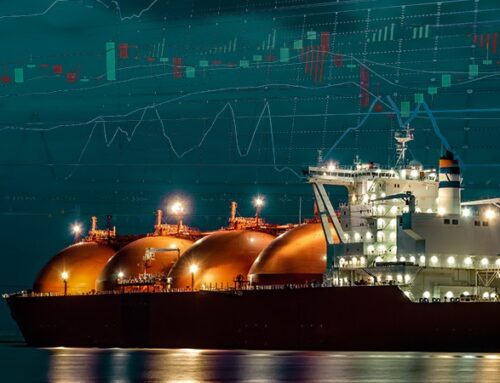Over the past few years there have been frequent predictions of a new “dash for gas” in Europe, with many in the industry believing that gas is the natural solution to the challenges posed by the desire to decarbonise the electricity sector while maintaining security of supply. Gas demand however continues to fall and far from a gas renaissance, the past few years have seen almost no new gas generation being built and even efficient modern plants being mothballed due to poor economics.
Demand
Forecasts for European gas demand have consistently proved to be too optimistic, as illustrated clearly in this analysis by E3G. These charts are particularly interesting:

A quick internet search reveals a wide range of expectations – forecasts for European gas demand in 2020 range from 445 Bcm (IEA, OECD ex-Turkey), to 522 Bcm (Timera Energy, IEA countries), to 564 Bcm (The Oxford Institute for Energy Studies, 35 European countries including Turkey).
This compares with the most recent consumption data from Eurogas of 426 Bcm in 2015 for the EU-28 (2015 data are not yet available on Eurostat’s website to allow a full comparison with the forecasts on a like-for-like basis). This represents an increase of 4%, and is the first year-on-year increase in 4 years, however, weather was a major factor with 2015 having temperatures closer to average after a very mild 2014.
Coal to gas switching: will the theory translate into practice?
The question is whether we are on the verge of an upswing of gas demand, reversing the recent trends. Proponents of this view argue that decarbonisation of the electricity sector will necessitate the replacement of dirty coal generation with a combination of relatively cleaner gas and intermittent renewables, and that gas plant is ideally placed to act as a back-up for renewables due to its high degree of operational flexibility.
European gas markets have lost out in recent years as a result of the US shale revolution which displaced large volumes of coal from the American markets and precipitated a major reduction in global coal prices, which have remained at or below the marginal cost of production for the past few years. With carbon prices also remaining at low levels, gas was pushed down the merit order and out of it all together in some cases, such as Germany, where gas now contributes very little to the generation mix (aside from CHP systems).
However, gas has seen a significant drop in price of its own that is starting to make CCGTs more attractive again, particularly in the UK, where falling gas prices combined with an increase in the carbon floor price has seen a meaningful move out of coal, and, as noted in a previous post, the first day in “modern” times that coal did not contribute to meeting UK power demand.
But the UK example is not typical of the rest of Europe, where gas was so far out of the merit order that prices need to move further before there is any meaningful switch out of coal, as illustrated by the chart below, taken from a recent report from BCG:

Timera Energy has ranked the top five countries with potential for coal to gas switching as the UK, Italy, Spain, Germany and the Netherlands. Taking the top and bottom of these, it calculated the price levels at which switching would occur:

The coloured dots represent different combinations of gas and coal prices, while the lines indicate the baseload switching boundaries for CCGT plants of different efficiencies. If the dots sit below the lines then market prices favour gas burn – above the line prices favour coal. This analysis shows that while the UK market is seeing price evolution that would stimulate switching, this is far from being the case in the Netherlands.
Gas price evolution: where to from here?
European gas prices have fallen strongly over the past year, partly due to falling oil prices, and partly due to an ongoing supply overhang, with Gazprom publicly targeting record exports to Europe of 165 Bcm in 2016, up from 159 Bcm in 2015. This is coinciding with reduced LNG demand in Asia as well as the completion of a number of liquefaction projects: Australian projects that will supply those local Asian markets, and the first US LNG exports that are likely to target the Atlantic basin.
As the Asian premium of recent years erodes, Europe is increasingly seen as the LNG destination market of choice, leading some commentators to speculate that the increased Russian volumes this year are a tactic to depress prices to levels which would deter any further US projects from taking FID.
Europe has plenty of spare regas capacity and can easily receive significant additional volumes, should demand materialise, and this is at the heart of switching expectations: a combination of falling prices and policy choices could stimulate increased gas demand from the power sector, at the expense of coal.
So will this new demand materialise?
ICIS anticipates significant new CCGT construction across Europe in the coming years, with 15 GW expected in the UK by 2020, driven by improving margins and the effect of the capacity market, however so far the only new plant is under construction, the 800 MW Carrington CCGT which is currently being commissioned. The Timera Energy analysis shows that only the most efficient CCGTs are consistently more economic than coal, and to stimulate new build, developers would need to be confident of recovering their capital costs over time, so switching signals for existing plant are not necessarily sufficient.
It seems unlikely that market spreads will adjust sufficiently to provide the necessary economic returns for new CCGT construction, meaning that any new projects would rely on policy instruments such as capacity payments in order to close the income shortfall. It is also likely that income from ancillary services such as frequency response and reactive power will form a larger part of gas plant economics in markets with growing renewables penetration.
Policy impacts can also work in the opposite direction, deterring new investment, as found by UKERC which argues that requirements to retrofit plant with carbon capture and storage capabilities in the 2030s will negatively affect investor appetite for new projects now, by limiting the likely economic life of such investments.
Although a viable CCS technology has yet to be developed, this has not prevented CCS from being consistently linked with energy policy and it is therefore reasonable to expect that investors would want to mitigate such risks through shorter payback periods, requiring higher returns in the earlier years of the life of any new plant. As the UK government releases its new rules for the Capacity Market it should become clearer whether such incentives will arise, and whether the projects identified by ICIS will secure the funding needed to take them off the drawing board and into the market.






Leave A Comment